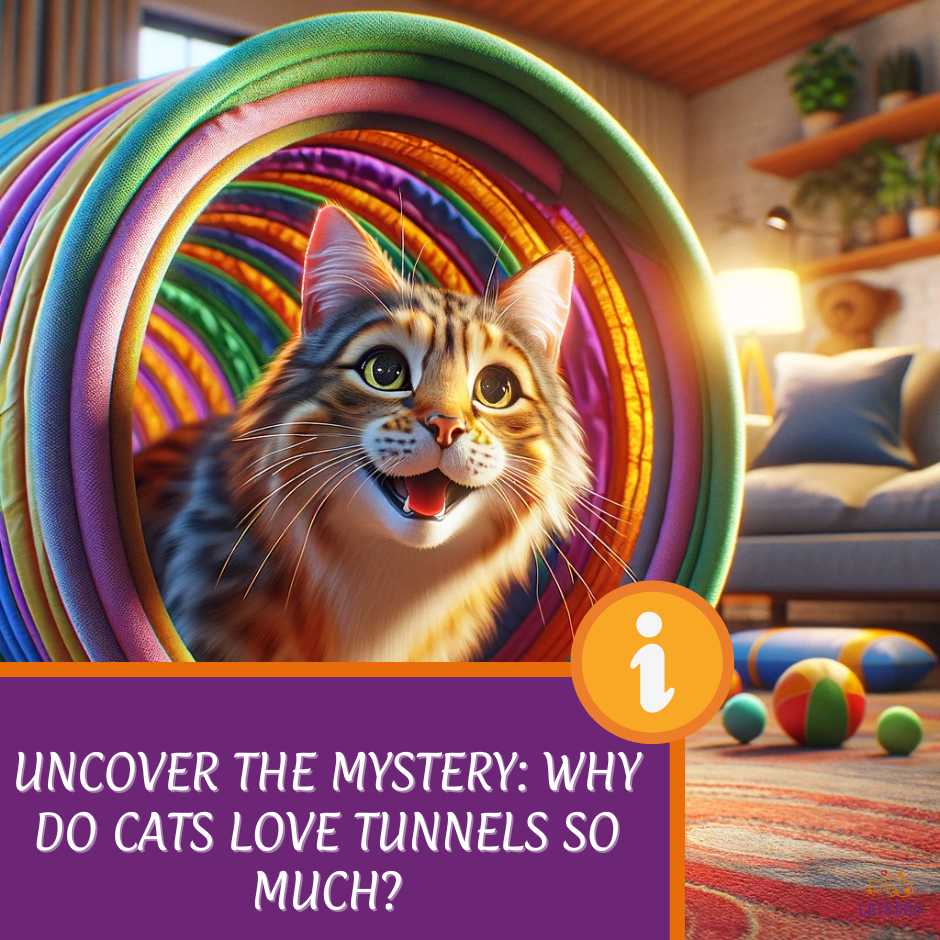Ever wonder why cats love tunnels so much? Tuning to your cat can be a fun and exciting experience for both you and your furry friend.
Whether a commercial cat tunnel or a makeshift one from a cardboard box, these simple structures, like the cat tunnel toy, provide a surprising amount of enjoyment and comfort to cat parents and their cats.
It turns out that the appeal of tunnels is deeply rooted in a cat’s instinctual behavior, providing both a place to play and a secure environment.
Cats are naturally curious creatures, always on the hunt for new experiences, and the thrill of exploration also plays into this love for tunnels.
If she’s hiding under the bed or in the closet in the sanctuary room, locate tunnels leading to her resources so she can start to venture out.
Cat parents must create a positive environment to ensure their cats feel comfortable and safe while exploring their new toy, such as a new tunnel.
The risk of choking hazards regarding cat toys, including tunnels, cannot be understated. If ingested by cats, small pieces can lead to choking incidents and other health problems.
Following these tips, cat parents can create a fun and exciting environment for their cats to explore and play in their new tunnel.
Key Takeaways
- Cat tunnels cater to a cat’s instinctual need for play and security.
- The pet product market has grown, reflecting a demand for items like cat tunnels.
- Tunnels provide cats with exercise and a comfortable hideaway.
Understanding Cat Behavior
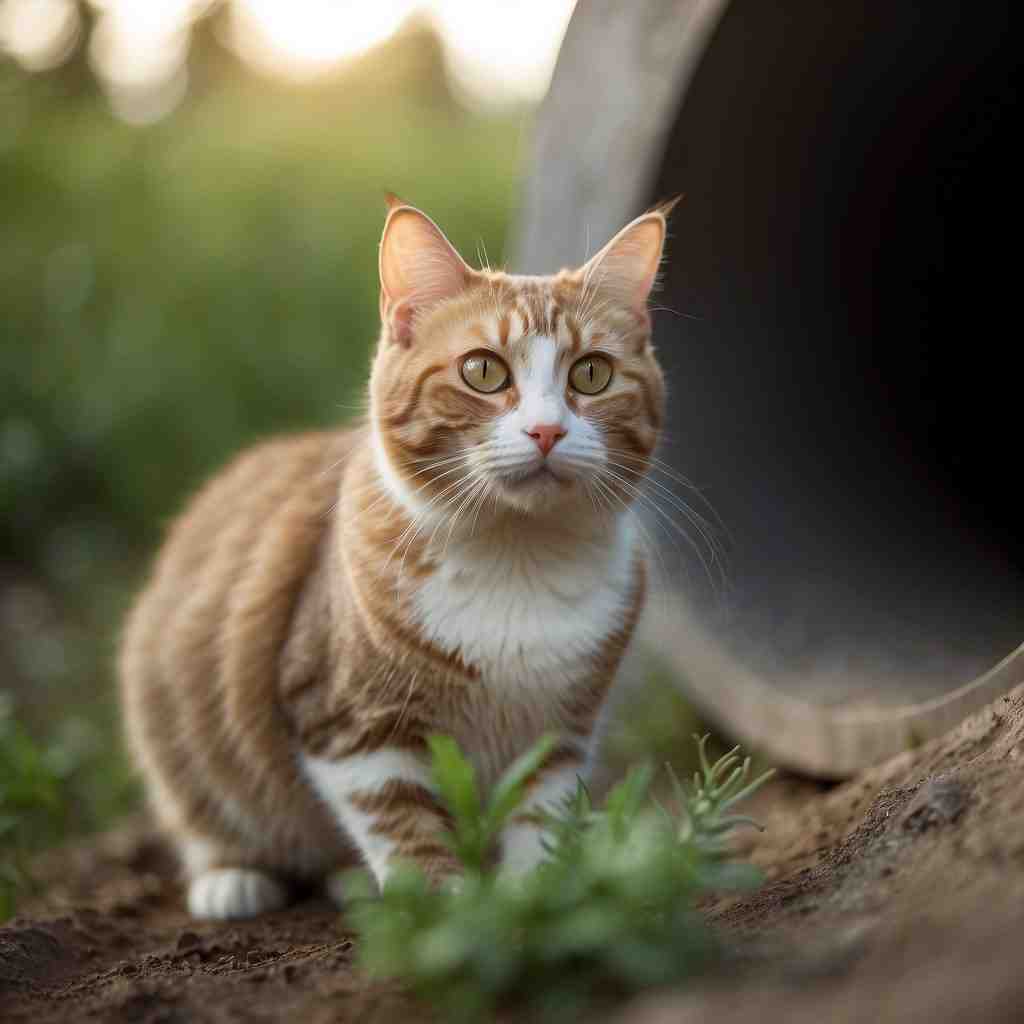
Instincts run wild in your feline companion, and these profound behaviors aren’t just random quirks.
They’re deeply rooted in their ancestral DNA, shaped by the need to survive in the wild.
Cats exhibit a range of behaviors that reflect their hunting heritage. They often:
- Stalk their “prey” (which can be anything from a laser pointer dot to a stuffed mouse)
- Pounce with precision
- Seek cover to launch a surprise attack
These actions aren’t just for show; they’re critical for honing their natural skills. And guess what helps them practice these instincts in the safety of your home? You’ve guessed it—tunnels!
Now, let’s talk about the psychological appeal of tunnels and small nooks. Ever noticed how your cat can’t resist squeezing into a tight box or drawer? They love the sense of security that an enclosed space provides.
Studies by animal behaviorists suggest that these spaces replicate the secure confines of a hiding place in the wild, offering your cat a cozy spot to curl up and conserve body heat while hiding from potential and perceived threats.
The tunnels provide an additional secure place for cats to retreat and feel secure, just like the small nooks they seek out.
This can be especially beneficial for cats that are recovering from an illness or injury, as the tunnels offer a safe and secure place for the cat to rest and recuperate.
Additionally, a cat tunnel creates the perfect place where your kitty cat can feel comfortable, safe, and relaxed, enhancing their overall well-being.
Most cats love nothing better than small spaces where they can play hide-and-seek.
They have a penchant for cardboard boxes, dark nooks, and under beds and furniture, and you may want to consider some paper bags for added excitement.
- A sense of safety (1)
- A cozy spot to observe the world (seemingly) unnoticed
- An ideal napping place where they won’t be disturbed
Like their wild ancestors, modern house cats still feel the urge to seek out these secure spots, and tunnels are just the perfect spot for this purpose.
They’re like their very own feline fortress of solitude, where the family dog cannot find them.
So the next time you see your cat disappear into a tunnel, think of it as a little slice of ancestral heaven for them. Isn’t it fascinating how these simple toys can mean so much to our beloved pets?
Benefits of Cat Tunnels
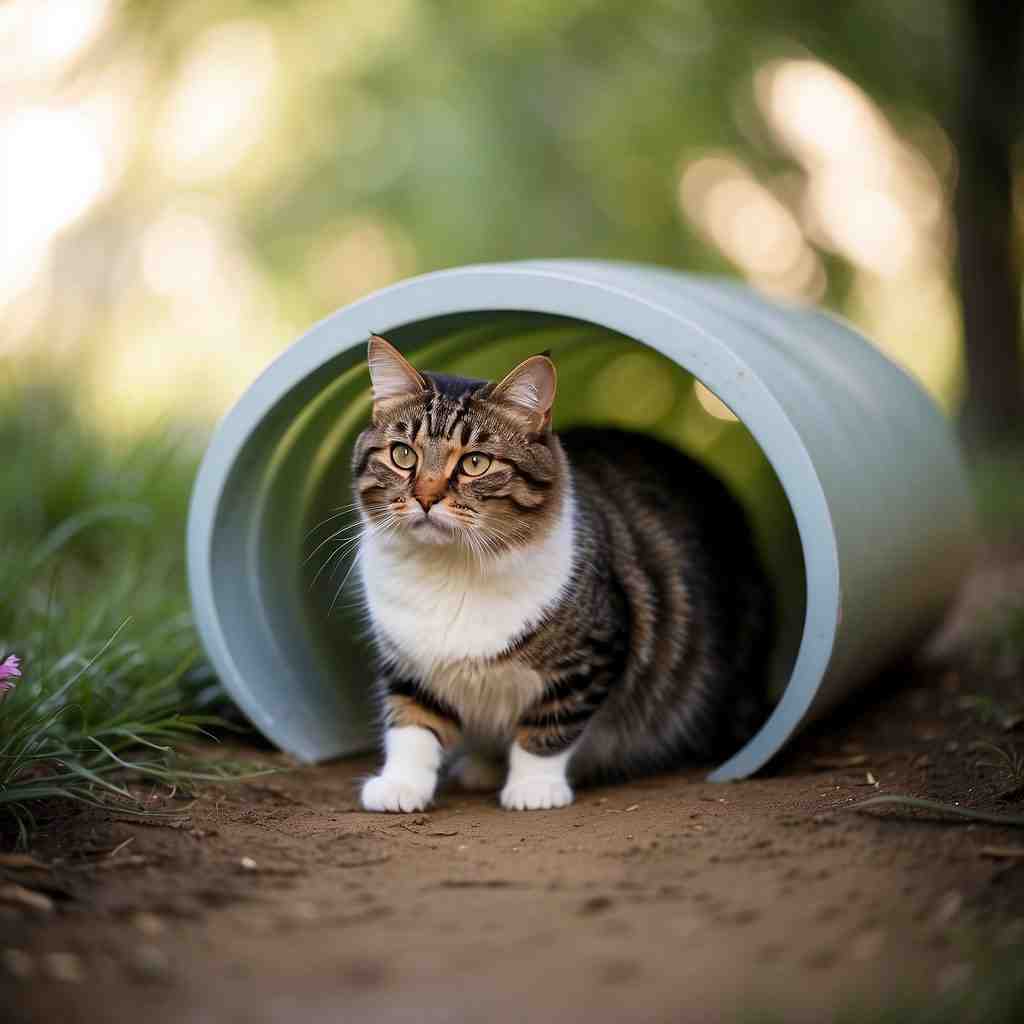
With the hum of obesity in kitties at an alarming rate—did you know approximately 60% of cats in the U.S. are overweight or obese?—active play is critical.
Tunnels provide a playful environment for exercise and play, making them a great way to help cats burn off that extra energy.
Tunnels are even a great way for you to play with your cat, and they can be enhanced with the addition of dangling toys, which can further engage your feline friend.
- Sprinting and chasing
- Pouncing and leaping
- Agility and coordination practice
Stats Alert: Regular play in tunnels helps reduce that hefty number by keeping your cat physically engaged.
Mental Stimulation and Stress Relief Think of tunnels like feline therapy. (2)
They’re not just fun; they’re a boon for mental health. In case studies, access to stimulating environments like tunnels has been associated with lower stress levels in cats. Here’s how they help:
- Serve as a hideaway for privacy
- Offer a safe zone for observation
- Enrich the cat’s environment, preventing boredom
Social and Environmental Benefits Ever wondered how to keep the peace in a multi-cat home? Tunnels may be the answer. (3)
Citing pet psychology journals, it’s understood that in shared spaces, tunnels:
- Encourage cooperative play among cats
- Prevent disputes by providing separate play areas
- Support a cat’s innate need for territory
So, why not get your paws on one? Your cat will not only thank you for the fun but also for the bounty of well-being benefits—wrapped up in one simple, winding play space!
Scientific Insights into Why Do Cats Love Tunnels
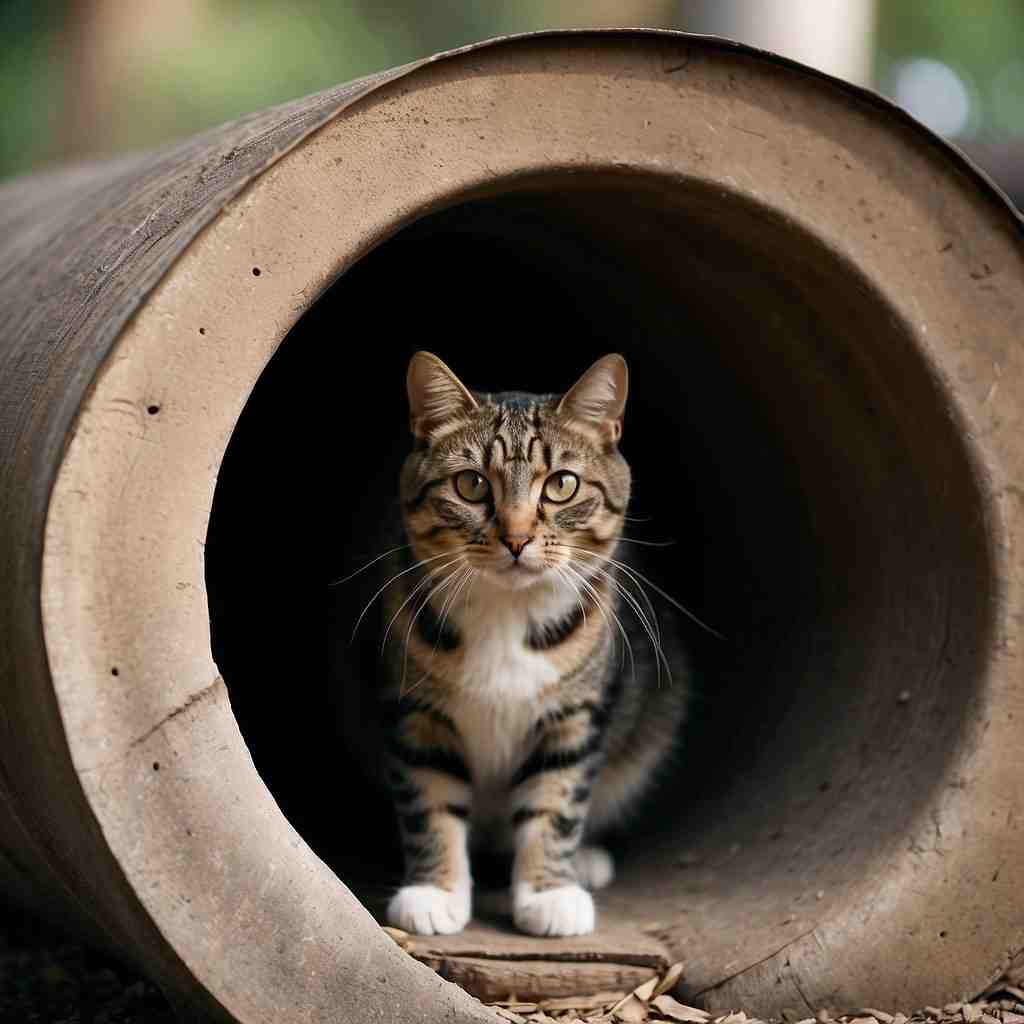
Your cat’s ancestors were quite the stealthy hunters, relying on the protective concealment of the underbrush and narrow passages to stalk prey.
These survival tactics are hardwired into your cat’s instincts—even if the only “hunting” they do is chase a toy mouse.
If you notice that your cat is displaying any signs of illness, it’s always best to take them to a veterinarian as soon as possible. Your cat may also need to be x-rayed to detect any potential blockages.
Evolutionary Perspective:
- Ancestral Behaviors: Instincts drive cats to seek out confined spaces, reminiscent of their days in the wild. (4)
- Safety & Protection: Tunnels replicate the secure environment cats would naturally gravitate towards for hiding and resting. (5)
Behavioral Studies on Feline Play: Recent veterinary studies have shed light on just how important interactive play is for your cat—both for physical exercise and mental stimulation.
Tunnels not only provide a fun and challenging environment for interactive play, but they also serve as the ideal location for a quiet nap in a dark, secluded spot.
- Playful Engagement: Cats exhibit increased levels of play when given tunnel-like structures.
- Mental Stimulation: Exploring tunnels satisfies your cat’s curiosity and need for stimulating experiences. (6)
Understanding these patterns helps you see the world from your cat’s perspective—an intricate maze of potential adventures.
While I can’t offer you statistics, case studies, or academic papers in this short section, just know that the attraction is real.
Who needs a jungle when you have a tunnel at home, right? Keep on nurturing your cat’s instinctual love for crawling into these cozy hideaways—they’re not just playing; they’re tapping into their wild side!
Choosing and Using Cat Tunnels Effectively
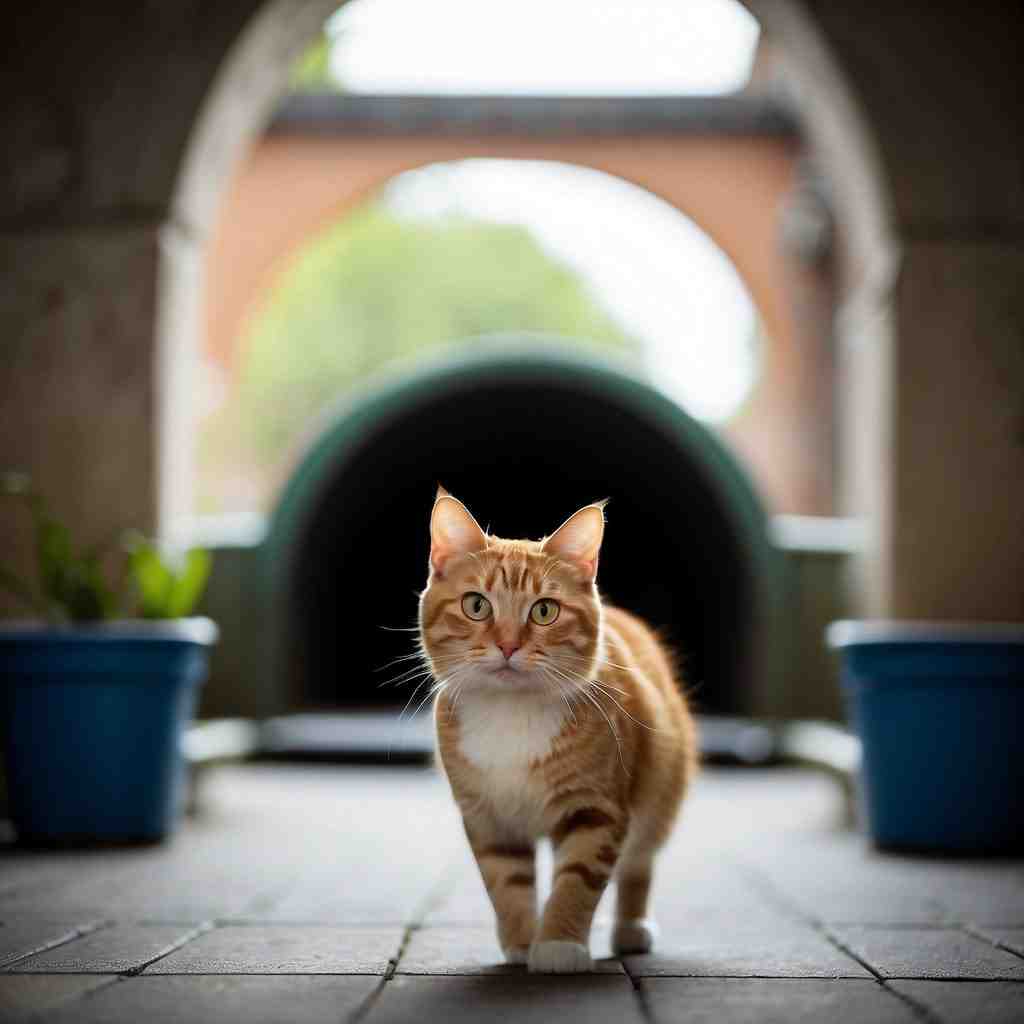
Cat tunnels are not just another toy; picking the right one can turn into a delightful hideaway for your kitty companion. Let’s get right into making clever choices and ensuring your cat’s enjoyment and safety!
Different Types of Cat Tunnels
Searching for the ideal cat tunnel? It’s like shopping for shoes – the options can be overwhelming. Here’s a quick rundown:
- Crinkle Tunnels: They make fun noises that might remind your kitty of scurrying critters.
- Connectable Tunnels: Want to build a kitty maze? These can be connected.
- Rigid Tunnels: Prefer something sturdier? Go for a rigid tunnel that maintains its shape.
Pros & Cons
| Type | Pros | Cons |
| Crinkle Tunnels | Stimulating sounds; lightweight. | Not as durable; can be loud. |
| Connectable Tunnels | Expandable; customizable. | May take up more space; higher cost. |
| Rigid Tunnels | Durable; stable. | Less portable; fixed shape. |
Choose based on your cat’s size and their love for adventure. A shy, petite feline might prefer a cozy crinkle tunnel, while a large, bold explorer could benefit from a connectable maze.
Safety and Adaptability
Your cat’s well-being is the top priority. Stick to tunnels from reputable brands that adhere to safety standards.
Keep an eye out for any loose strings or holes that could trap tiny paws. Regular inspections of the tunnels can prevent accidents and ensure a safe play environment.
To keep things fresh, rotate the tunnels or change their configuration periodically. It makes for a splendid game of “find the new route” for your curious cat.
Your kitty deserves a safe place to play that caters to their instincts, and you deserve peace of mind. Choosing the right cat tunnel with these tips will bring joy to you and your furry friend – happy tunneling!
Integrating Tunnels into Your Cat’s Life
Introducing Tunnels to Cats
Have you ever seen your cat eyeing that cardboard box or squeezing into a tight space with pure delight? Imagine their joy when you introduce a tunnel into their territory!
Here’s how to ensure your feline friend gets the best out of their new adventure tube:
- Start slow: Place the tunnel in your cat’s favorite room, keeping it in plain sight. Let curiosity do its work!
- Use treats: Lure your furry pal into the tunnel with a trail of their favorite snacks.
- Play it safe: Avoid forcing them in. Cats are natural explorers and will venture inside when ready.
Testimonial:
“Mittens was hesitant at first but now, she dashes through her tunnel like a little lion on a mission!”
Enhancing Playtime with Tunnels
Tunnels are not just for hiding; they’re a playground for your whiskered companion! Check out these pawsome play ideas:
- Peek-a-boo play:
- Materials: Your hand and a playful spirit.
- Instructions: Partially hide in the tunnel and gently tap the outside to entice.
- String chase:
- Materials: A string or feather wand.
- Instructions: Thread it through the tunnel and watch your cat pounce with precision.
Fun Fact: Cats often enjoy an impromptu game of hide and seek in their tunnels, adding an exciting layer to their daily routine.
Remember, the key is a gentle nudge; never force the fun. With a sprinkle of patience and a dash of encouragement, your cat will be tunneling like a pro. Happy tunneling!
Quick Recap
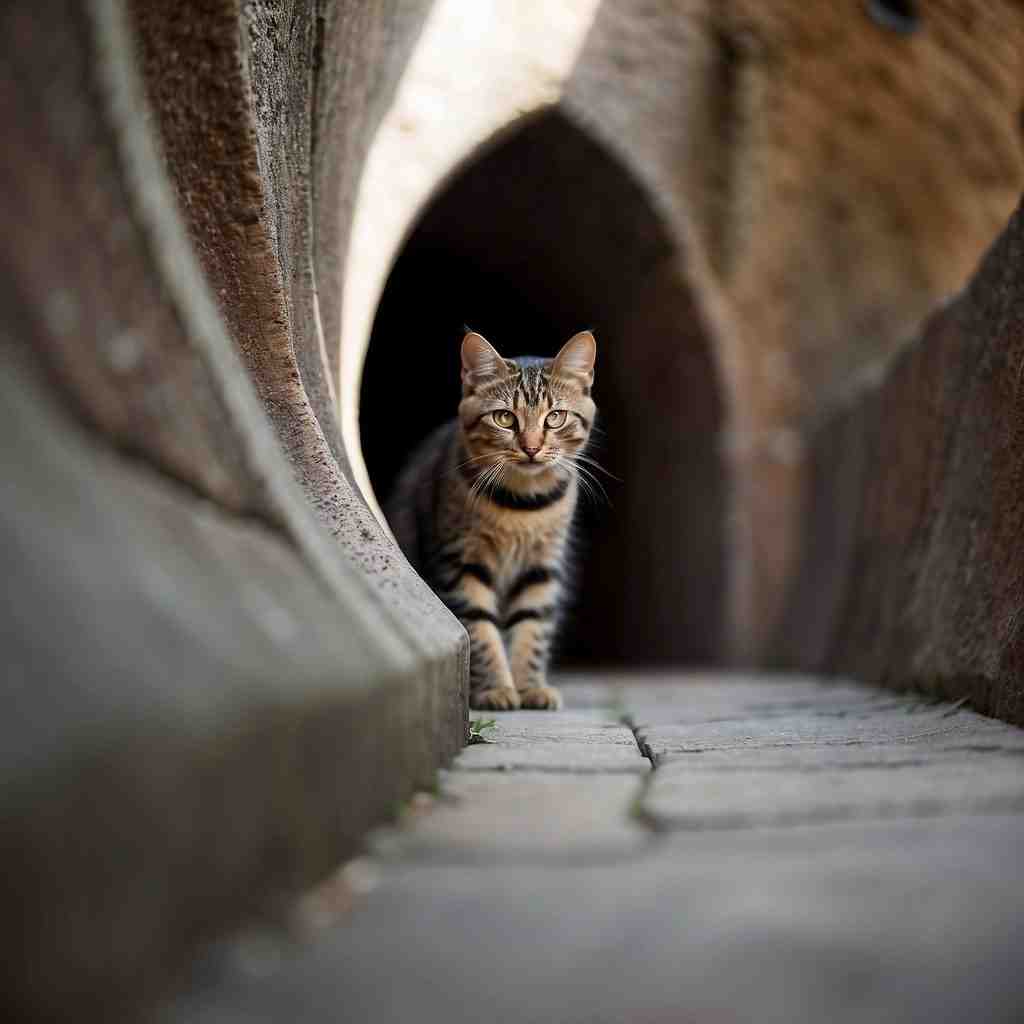
Here’s a quick recap to help you appreciate why your cat’s tunnel isn’t just another toy.
First off, tunnels cater to your cat’s instinctual need for a covert hideout, creating a sense of security. It’s where they can wait out the world’s chaos from a snug vantage point.
But it’s not all about hiding; it’s also about the hunt. The tunnel’s enclosed space mimics the stalking lanes your cat would use in the wild to ambush their prey.
Why Tunnels Are Tops for Tabbies:
- Security: Enclosed spaces make cats feel safe.
- Play: Tunnels satisfy the hunting instinct.
- Exercise: Active play keeps them fit and wards off obesity.
Sure, not every feline is keen on clawing through a tunnel, but for many, it’s an instinctual joy.
Remember, while your cat delves into their tunnel, they’re not just playing; they’re expressing deep-seated behaviors. You’re not just a pet owner; you’re a facilitator of feline happiness and health.
Next time you see your cat zip into that play tunnel, give yourself a pat on the back for supporting their natural behaviors.
A happy cat means a happy home, and who doesn’t love a bit of purring harmony? Keep those tunnels coming, and watch your whiskered friend thrive!
Frequently Asked Questions
Let’s answer some of the most common questions you might have!
Are Tunnels Suitable for All Cats, Including Seniors and Kittens?
Absolutely! Tunnels cater to a cat’s instinctive need for hiding and playing.
For kittens, tunnels are a fantastic playground that meets their high energy levels.
As for senior cats, they can still appreciate a good tunnel for a more laid-back form of play and a cozy nap spot, as long as it’s comfortable and easy to access.
Could you shed light on the sleep patterns of cats inside tunnels?
Well, you might find your cat snuggling up in a tunnel for a snooze because it provides a safe, enclosed space.
Cats love feeling secure when they sleep, and tunnels can offer just that. Plus, the darkness inside a tunnel can be perfect for catching those z’s at any time of the day.
Why Do Cats Prefer Tunnels Over Other Toys?
Tunnels speak directly to your cat’s instincts! These toys mimic the enclosed spaces cats would explore in the wild.
It’s the thrill of the hunt that gets them excited – the tunnel acts like a hiding spot from where they can pounce on unsuspecting “prey” like their toys, or even your unsuspecting feet as you walk by.
What makes cat tunnels such a thrilling hideout for feline friends?
Think of tunnels as the ultimate stalking ground.
They allow your furry friend to observe their surroundings covertly, giving them a sense of control and the thrill of the hunt.
It’s their jungle where they can indulge in their wild side.
Can Tunnels Help With Behavioral Issues in Cats?
Yes, indeed! Tunnels can be a great outlet for excess energy and help reduce stress in cats.
If your cat is exhibiting mischievous behavior, a play session in a tunnel might just be the key to calming those frisky feline spirits.
How do cat tunnels benefit my kitty’s well-being and playtime?
Engaging in tunnel play can keep your cat both physically and mentally stimulated.
Scampering through a tunnel helps with their agility while planning their “attacks” keeps their minds sharp. Plus, it’s just plain fun – and happy cats are healthy cats!
- Online Gambling Establishments Accepting Paypal: A Comprehensive Overview for Gamblers - July 26, 2025
- Leading Mobile Casino Sites: The Ultimate Overview for Online Gambling on the move - July 25, 2025
- Gambling Establishments That Approve PayPal: A Safe and Convenient Choice for Online Gaming - July 25, 2025

